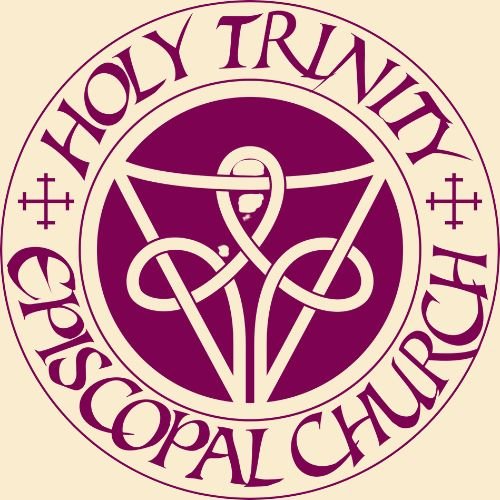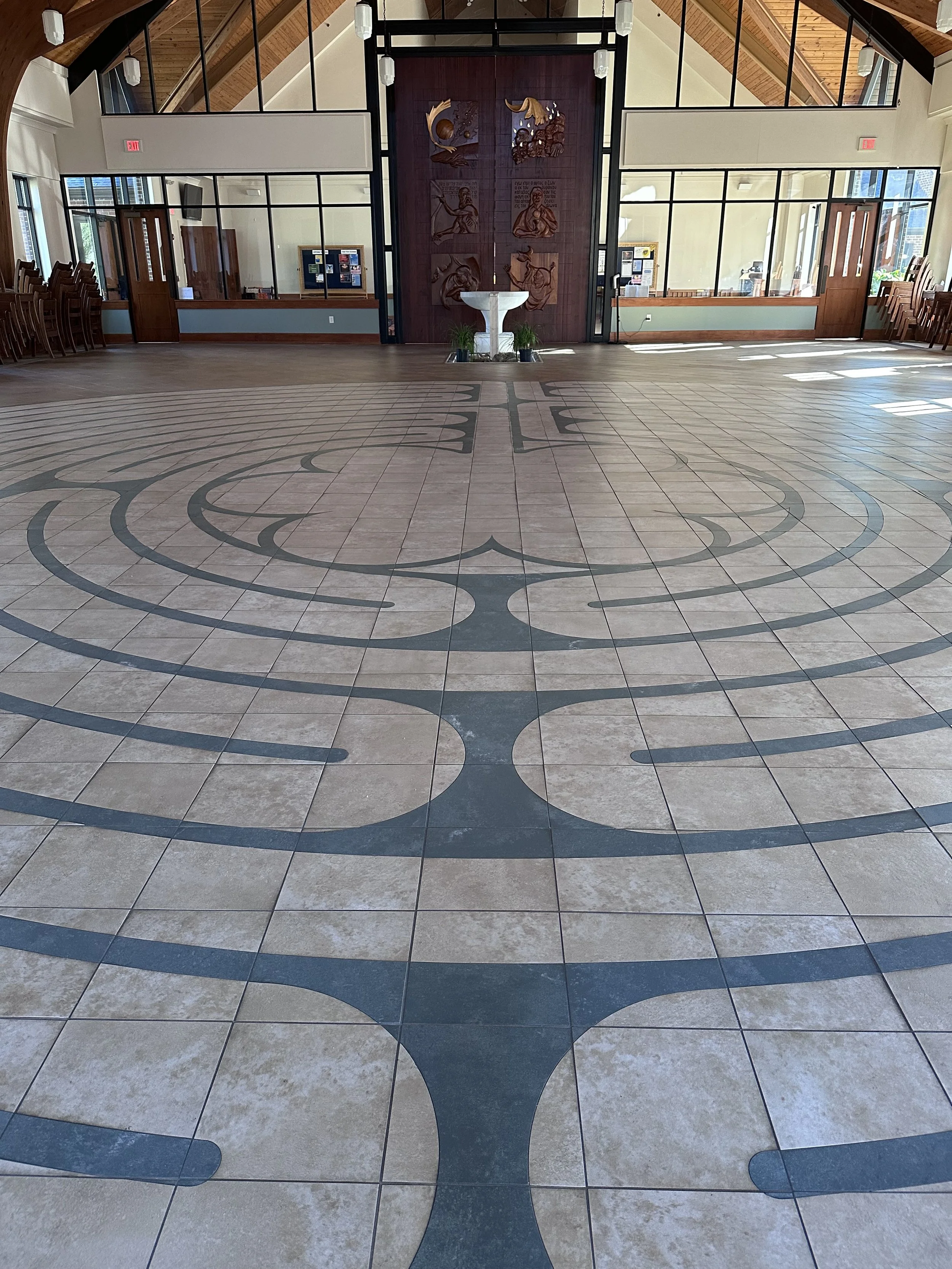A labyrinth is not a maze. It has only one path to the center and back out, which is the meaning of the term unicursal (one line). It has no blind alleys or dead ends. The path twists and turns back on itself many times before reaching the center. Once at the center, there is only one way back out. In this way, it symbolizes a journey to a single destination (such as a pilgrimage to a holy site) or the journey through life from birth to spiritual awakening to death.
Labyrinth
One outstanding feature of our worship space is the labyrinth set into the tiled floor.
Labyrinth walking is an ancient practice used by men and women of the Church for spiritual centering, contemplation, and prayer. Entering the winding path of a labyrinth, the walker walks slowly while quieting the mind and focusing on a spiritual question or prayer. Labyrinths are used for walking meditation to assist us in finding peace and clarity, managing stress, and helping with decision-making, self-exploration, and reflection.
A labyrinth can also provide the opportunity to examine goals, assess talents and abilities, make decisions, and evaluate personal and professional progress. Others view walking a labyrinth as a metaphor for life’s journey – a journey to your deepest self, where you come back into the world with a clearer understanding of yourself. It is seen and used for different reasons by different individuals.



